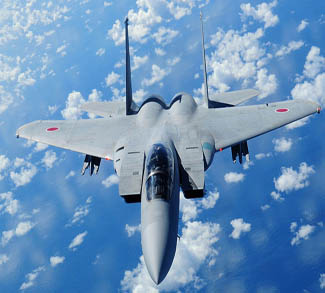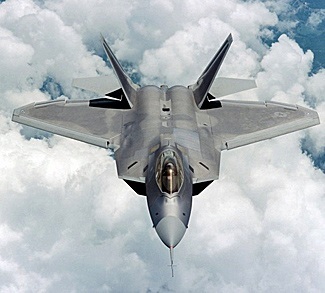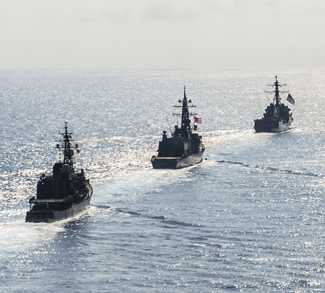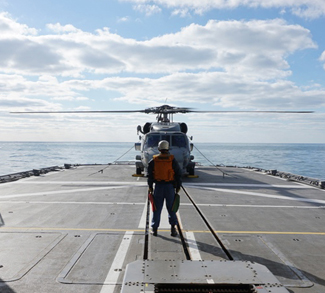In a move that could have far-reaching consequences in the Asia Pacific region, Japanese Prime Minister Shinzo Abe has followed through on one of his campaign promises and increased defense spending after nearly a decade of budget reductions.
Japan’s Defense Ministry has indicated that it will ask for $2.1 billion in funding from a government stimulus package, a request that comes on the heels of a $1.1 billion budget increase that was announced last year. The increase marks the first time in 10 years that the Japanese government has boosted its defense budget, and it stands as further proof of deepening tensions throughout the Asia Pacific region.
New budget allocations will be spent on PAC-3 anti-ballistic missiles (Lockheed Martin), as well as re-fitting programs for four of Japan’s aging F-15 jets. They come on top of several other procurement programs that have already been written into Japan’s $53 billion annual defense budget, such as the purchase of AEGIS systems for two guided-missile destroyers, and a planned purchase of 42 F-35 fighters over the coming years.
Another platform that Japan might target in the near future is the Golden Hawk (Northrop Grumman) unmanned surveillance drone. Last week, the Guardian UK reported that both China and Japan are increasingly interested in deploying unmanned drones in the Senkaku Islands dispute. For its part, China is pouring money into its domestic drone program, and Beijing is thought to be preparing to test-fly a platform that closely mirrors the US’s X-47B carrier-based drone. Japan on the other hand is expected to submit purchase requests to the US, and Prime Minister Abe has already expedited the process by ordering a review of Japan’s 2011-16 defense programs.
Japan’s renewed focus on boosting its military capabilities is the result of growing tensions with China, which boiled over briefly last year after Japan nationalized the Senkaku Islands, as well as the persistent threat posed by North Korea. The balancing trend against growing Chinese military power is evident throughout the region, from the Obama administration’s ‘Asia pivot’ policy to new arms purchase in India, Vietnam, the Philippines, and beyond. Western defense companies could benefit in a big way from a new Asian arms race, and the Aerospace Industries Association, a US-based defense contractor lobby group, reported that US arms sales to countries in the U.S. Pacific Command area increased 5.4% in 2012 alone.
Defense spending increases can be expected to continue in the future, as China’s military budget shows no signs of slowing its steady growth.
But in the case of Japan’s recent military adjustments, it’s not necessarily the new money or defense platforms that will necessarily make the biggest strategic impact. Recent budget announcements were paired with a series of scenarios that pit Japan’s SDF against various hypothetical enemies, such as North Korea, Russia, and China. Interestingly, one of these scenarios envisioned Japan coming to Taiwan’s aid in the event of a Chinese invasion of the island. This scenario, as the Diplomat’s Michael Cole points out, resembles a series of reports from 2007 that suggested US and Japanese planners were working out a series of military contingencies regarding a joint response to an invasion of Taiwan. Coincidentally, the oft-considered ‘pro Taiwan’ Shinzo Abe was standing Japanese Prime Minister when the 2007 talks were rumored to take place.




